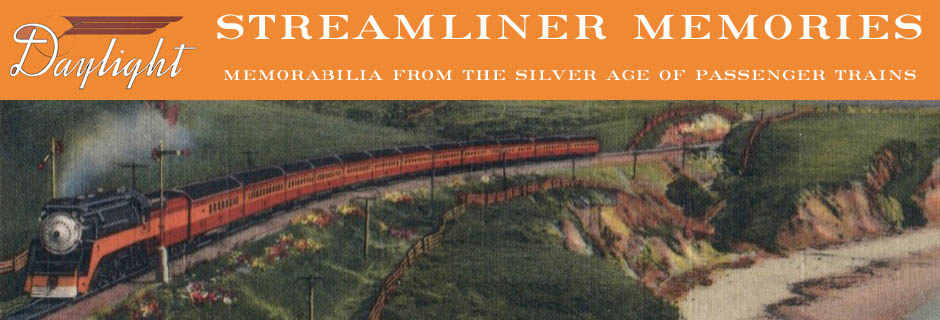The back cover ad on this timetable spins bad news to make it sound good. First, it says that “beginning on June 2,” the City of Los Angeles “will be all Pullman” while the Challenger “will be all coach.” What was really happening was that, due to declining patronage, the two trains were combined into one.
 Click image to download a 35.8-MB PDF of this timetable.
Click image to download a 35.8-MB PDF of this timetable.
Previously, the two trains operated on schedules that were approximately 12 hours apart. The two-night, one-day City of Los Angeles carried a chair car for short-distance riders so it wasn’t all Pullman while the two-day, one-night Challenger carried a few sleeping cars. Passengers thus had two departures a day whether they could afford a sleeping car or preferred to go by coach.
Starting June 2, however, the morning departure of the Challenger from Chicago and L.A. was cut and both trains were run together. A gate prevented the mingling of coach with sleeping car passengers, who each had their own dome and dining cars, and if demand was particularly high the train might be run in two sections a few minutes apart. But it was still only one schedule, thus reducing the choices available to potential passengers. In contrast, the Santa Fe still had four trains a day between Chicago and Los Angeles, and would still have three even after it combined the Super Chief and El Capitan in the same way that UP combined the City of Los Angeles and Challenger.
The other bad news brought up in the ad was that the City of Denver was “now operating on a new eastbound schedule.” It still left Denver at 3:30 pm but arrived in Chicago at 8:45 am, 15 minutes later than the previous schedule. In other words, the time en route increased by 15 minutes.
Scans of today’s Union Pacific timetable were contributed by Streamliner Memories reader Ellery Goode. Mr. Goode has also contributed more than 40 other timetables that I’ll be presenting later this month and in July.

You’ll notice too that C&NW is no longer the carrier east of Nebraska. UP opted to partner with MILW in late 1955 due to their dislike in C&NW’s handling of their passenger trains.